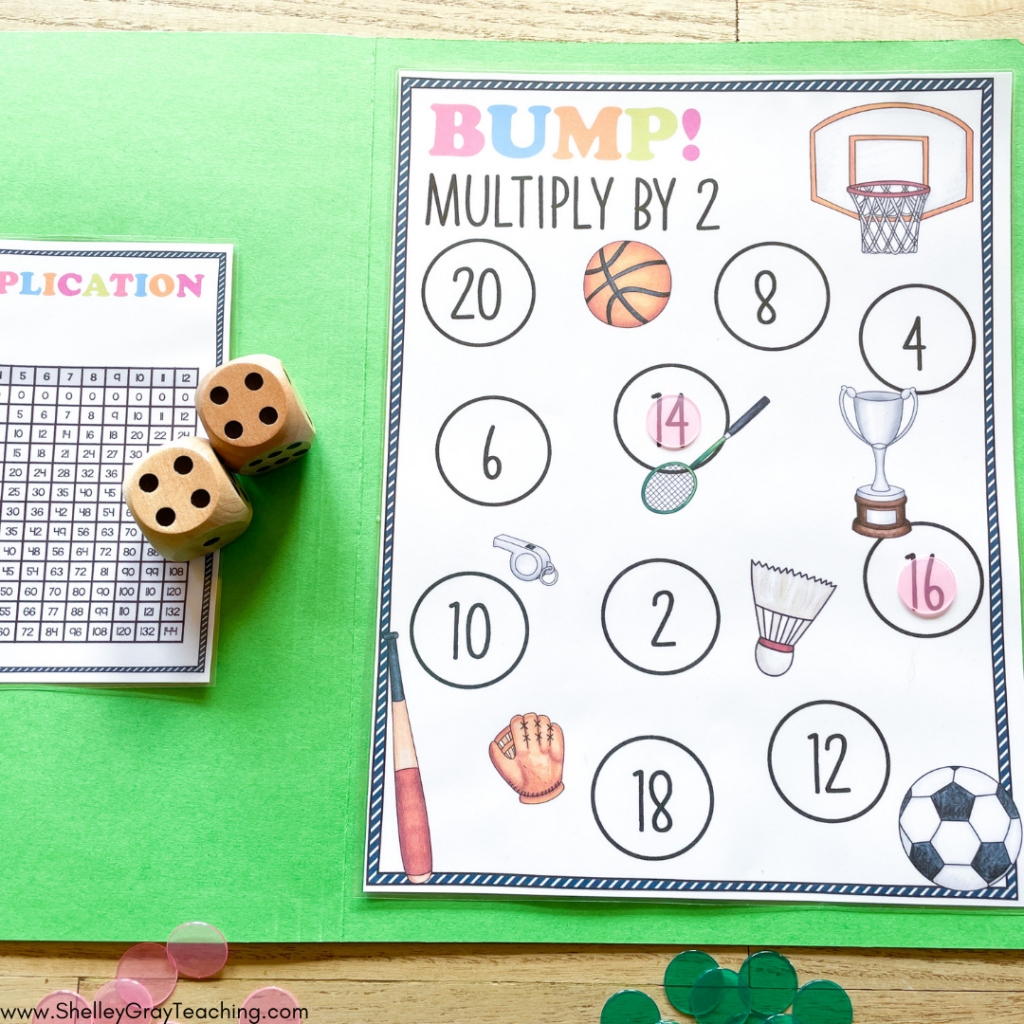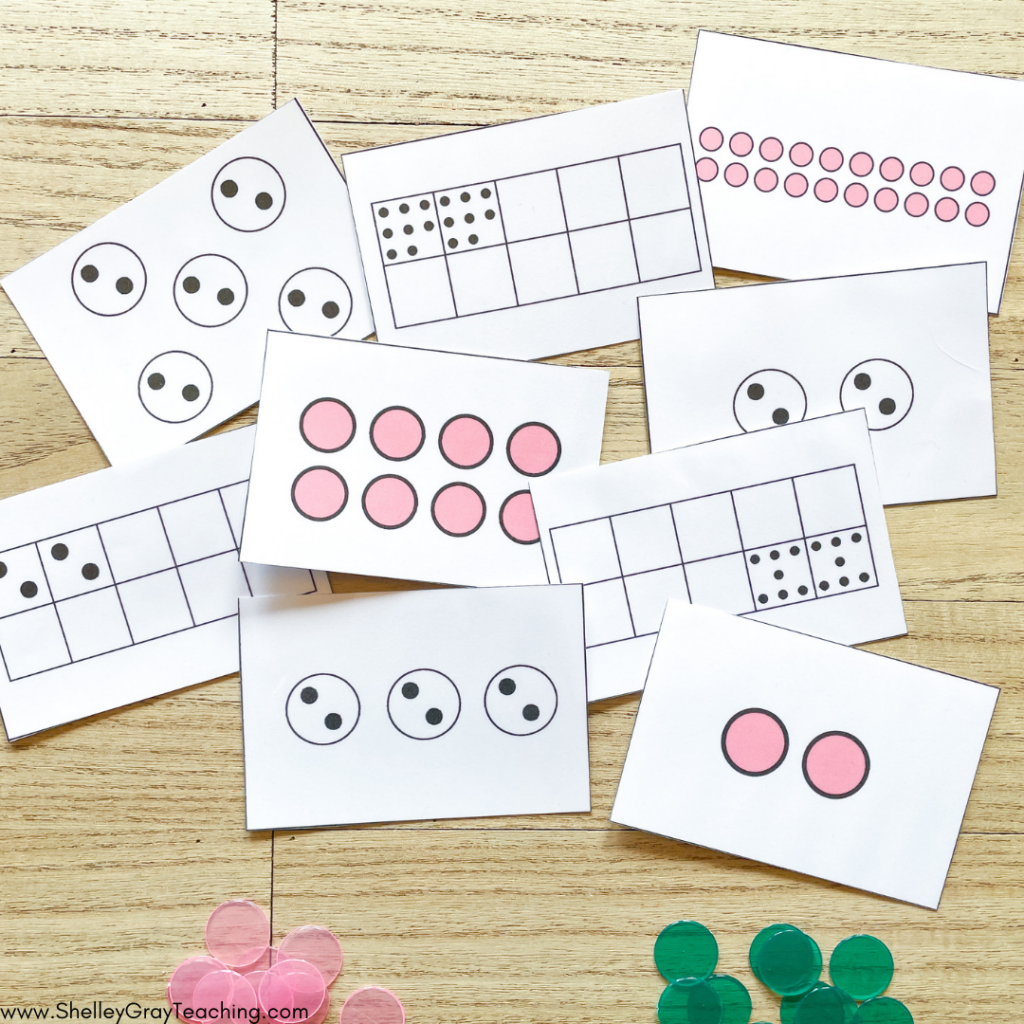Once your students learn the multiplication facts, it’s important to continue to reinforce them. But this can be easier said than done when you have a million other things to teach. This is where math games come in!
Math games are a perfect addition to your math centers or workstations because they reinforce key concepts in an engaging way that makes math fun!
Bump is a common game that your students have probably played before. It’s fun because it’s quick, competitive, and fast-paced. As students play, they practice tons of math facts (in a far more engaging way than flashcard practice or completing a worksheet).
Bump is typically played with two dice. Depending on the skill being reinforced, the instructions may vary slightly. Each player starts with 10 counters (each player should use a different color). The goal is to be the first one to use all your counters.
Table of Contents
Traditional Multiplication Bump
Traditional multiplication bump is the Bump your students know and love. It’s generally played with two dice, or can also be played with a 10-sided die depending on the game board.
In this example, we are practicing multiplying by 2. Students roll two dice and add them together, then multiply the sum by 2. In this example, we rolled 3 and 4. So we add that together to make 7, then multiply 7×2 to make 14 and cover the 14.

Now Player 2 takes a turn, rolling the dice, adding, and then multiplying. In this example, Player 2 rolled a 2 and 6, so she adds them together to make 8, and then multiplies by 2 to make 16. Player 2 covers the 16 with a chip.

Players continue to alternate turns. If a player rolls and multiplies, and the product is already covered with the other player’s chip, they can “bump” it off and take that space. In this example, Player 1 rolled and now multiplies 8×2 to make 16. 16 was already covered with one of Player 2’s chips, so Player 1 “bumps” if off and takes that space. Player 2’s chip is returned to her pile.


If a player rolls and multiplies and the product is already covered by one of his OWN chips, he may put a second chip on that space. This locks that space, and the other player can no longer bump off his chip.

The first person to use all their chips wins!
In a typical game of Multiplication Bump, a player will practice between 15 and 30 multiplication facts and have tons of fun doing it! Never underestimate the power of math games.
And now…for Multiplication Bump with a Twist!
Multiplication Bump With a Twist! Math Games for Conceptual Understanding
We know how important it is for our students to see multiplication in many different ways, and the math games we play should reflect that! In this alternative version of Multiplication Bump, students use game cards instead of dice.
The cards include multiple representations of multiplication facts using equal groups, arrays, and dots inside ten frames. This takes traditional Bump and turns it into a game that reinforces conceptual understanding using visual models of multiplication!

This is played the same way as traditional Bump, but instead of rolling dice, students choose a card from the stack.

Multiplication Bump is one of my favorite math games because it’s low-prep and high engagement. It can be played in a relatively short amount of time, making it the perfect math game for early finishers or math centers. It’s also a fantastic way to differentiate – some students might work on Bump with basic facts, while some might work on Bump for multi-digit multiplication.
Where Can I Get Multiplication Bump Math Games?
If you’re interested in purchasing the Multiplication Bump games that you’ve seen in this post, you can find them here. This resource includes Multiplication Bump games in three different formats (regular dice, ten-sided dice, game cards) for a total of 31 different Bump games. Set them up as file folder games or in Morning Math tubs to keep math facts a consistent focus this year!






